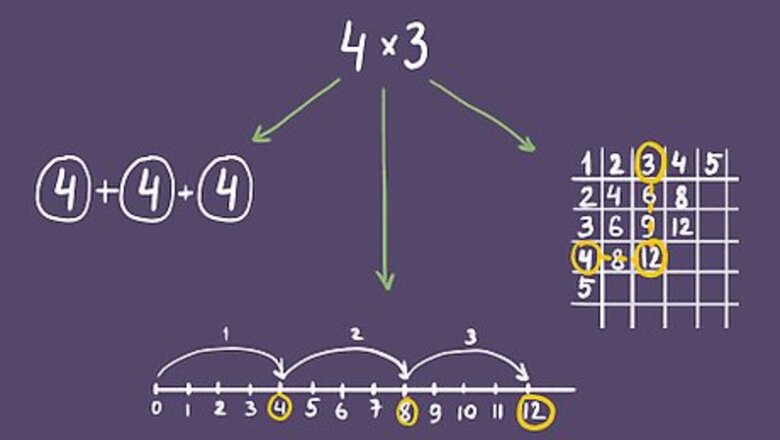
views
Teaching the Skills
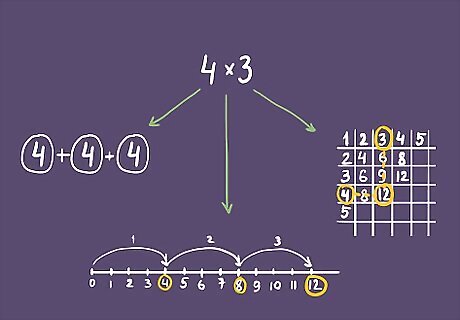
Start with the fact families of 0, 1, 2, and 3. When memorizing, it's important to rehearse a small portion of facts before attempting to learn the entire chart. Remember: Your child isn't counting; they are simply memorizing. Presumably, they already know the basic concept of multiplying. If your child is unfamiliar with multiplying, put it in terms of adding. That is, 4x3 is 4+4+4. Ask your child to bring you their math book and any resources they've been given. You'll be able to see exactly what they are studying and the teaching method used in their school. Have a chart or number line handy showing the numbers 0 through 100. A chart will give you the answers by correlating the row with the column. A chart is better for those just starting off as the answers are quicker to find. A number line is a bit more work. You can have your child circle the multiples of a certain number in pencil or code each number and its multiples with different colors.
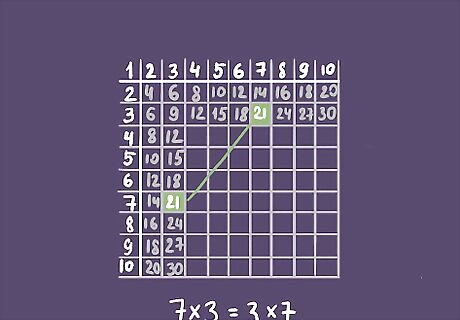
Explain how the commutative property makes everything easier. Show your child that each answer repeats, so, technically, they only have to learn half of the chart (score!). 3x7 is the same as 7x3. When they've learned the fact families of 0, 1, 2, and 3, they already know 4 numbers each of 4, 5, 6, 7, 8, 9, and 10. After your child has mastered 0-3, move onto 4-7, and then 8-10. If you want to go above and beyond, work with 11 and 12, too. Some teachers will include a few harder problems for a bonus or to gauge where each child is at.
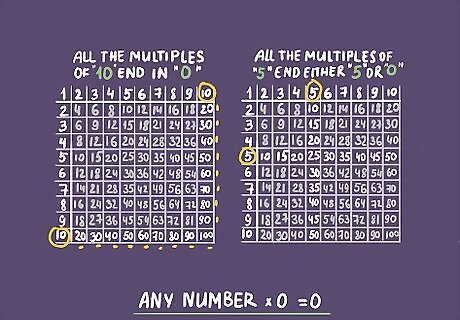
Discuss patterns in the whole chart. It doesn't all have to be rote memorization with no clues or hints. The chart will easily point out things to look for. All the multiples of ten end in zero. All the multiples of 5 end in either 5 or 0 and are half as large as the multiples of ten. (10x5=50; 5x5=25, or half of 50) Any number x 0 is still 0. No matter what.
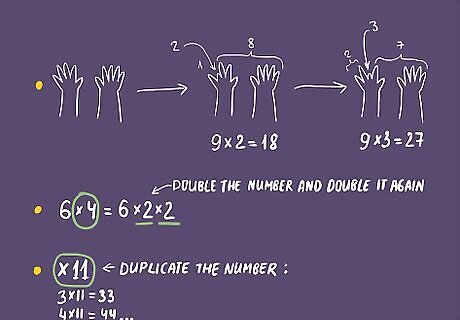
Know the tricks. Luckily, math is full of shortcuts. Teach your child these tricks and they'll be impressed and, hopefully, quite thankful. To memorize the 9's tables, use your fingers. Spread them all in front of you, palms down. For 9x1, put your left pinky down. What do you have showing? 9. For 9x2, put your second finger down (the left ring finger). What do you have showing? 1 and 8. 18. Put your third finger down--2 and 7. 27. This works all the way up to 9x9 (8 and 1. 81). If your child can double a number, the x4's will be easy. Just double the number and double it again! Take 6x4. 6 doubled is 12. 12 doubled is 24. 6x4=24. Use this to make the answer become automatic. Again, this is about memorizing. To multiply anything by 11, just duplicate the number. 3x11=33. Two 3's. 4x11=44. Two 4's. The answer is in the question, just twice. If your child is a math genius, teach them this trick to multiply 11's by double digit numbers. Take the double digit number and split it up. 11 by 17 is 1_7. Add the double digit number together and put it in the middle: 187.
Memorizing the Answers
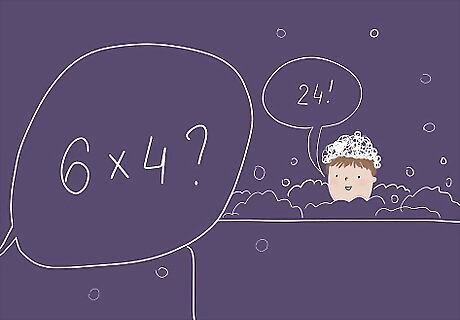
Do speed drills. Now that your child is familiar with the entire chart, drill them. Drill them over breakfast, during commercials, and for a few minutes before bed. As you progress, get faster and faster and faster. At the beginning, start in order. As you get more and more convinced that they have it down, start mixing it up. They'll slow down initially but then should spark right back up to where they were.
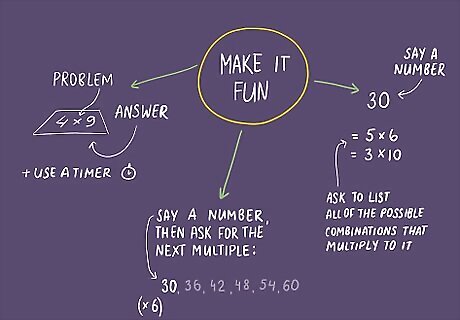
Make it fun. By this point, you both may be wondering what those squiggles in each number really are. Spice it up for the both of you with games and contests. Have your child make a set of flash cards. Write the problem, like 4 x 9, on the front and the answer, 36, on the back. The act of writing out the multiples will provide another repetition/reinforcement. Use a timer to see how many cards they can go through in a minute. Can they beat that score tomorrow? You could also do this with a blank chart. That's an easy way to monitor which ones they're struggling with. Grab a deck of cards. This game is similar to War, but with multiplication. You each get half the deck to place face down in front of you--don't look at the cards! Each player flips their first card simultaneously--the first person to say the answer based on the two numbers gets both cards (the object of the game is to win them all). If the two of you flip a 7 and a 5, the answer to shout out is 35. For Jacks, Queens, and Kings, you can use 11, 12, and 13, use them as 0's, or take them out entirely. Say a number, like 30. Can they list all of the possible combinations that multiply to it? 5 x 6? 3 x 10? Say a number, then ask for the next multiple. For example, start at 30 and ask for the next multiple of 6. Or start at 18 and ask for the next two multiples of 9. You could even start at 22 and ask for the next multiple of 4, even though 22 is not a multiple of 4. Be tricky once they have it. Try multiplication bingo. Your child fills in a six-by-six grid with whatever numbers they want. You read off a problem like "5 x 7." If they have 35 on their bingo card, then they mark it off. Continue until someone has a "bingo." What's the prize they could win? EXPERT TIP Joseph Meyer Joseph Meyer Math Teacher Joseph Meyer is a High School Math Teacher based in Pittsburgh, Pennsylvania. He is an educator at City Charter High School, where he has been teaching for over 7 years. Joseph is also the founder of Sandbox Math, an online learning community dedicated to helping students succeed in Algebra. His site is set apart by its focus on fostering genuine comprehension through step-by-step understanding (instead of just getting the correct final answer), enabling learners to identify and overcome misunderstandings and confidently take on any test they face. He received his MA in Physics from Case Western Reserve University and his BA in Physics from Baldwin Wallace University. Joseph Meyer Joseph Meyer Math Teacher Explore multiplication learning tool options. Multiplication grids, pegboards, electronic boards, and tiles offer a hands-on, engaging way to practice multiplication. Unlike flashcards that show a single problem, these tools can display multiple problems at once, helping you identify patterns and fast-track memorization.
Rewarding Your Child

Use incentives. You don't have to use money or material goods--that may spoil their love of learning. Of course, snacks, drinks and offering things they like to do are always good ideas. Save the big rewards for school tests. Once they can perform under pressure, you know you've been successful.
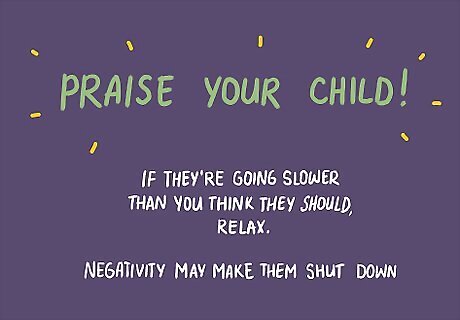
Praise your child. Don't forget to pause and have fun between serious repetitions of the facts. If you're happy with their success, they'll be more likely to want to be successful. Show them how awesome they're doing with verbal recognition. If they're going slower than you think they should, relax. Negativity may make them shut down. A bad mood can kill any learning ability. Encourage them to press on. EXPERT TIP Joseph Meyer Joseph Meyer Math Teacher Joseph Meyer is a High School Math Teacher based in Pittsburgh, Pennsylvania. He is an educator at City Charter High School, where he has been teaching for over 7 years. Joseph is also the founder of Sandbox Math, an online learning community dedicated to helping students succeed in Algebra. His site is set apart by its focus on fostering genuine comprehension through step-by-step understanding (instead of just getting the correct final answer), enabling learners to identify and overcome misunderstandings and confidently take on any test they face. He received his MA in Physics from Case Western Reserve University and his BA in Physics from Baldwin Wallace University. Joseph Meyer Joseph Meyer Math Teacher Make learning math fun. Every kid learns differently. Build on your child's strengths with playful academic activities and games that use their existing skills. By understanding how your child sees numbers, you can unlock their potential and help them become stronger at math.
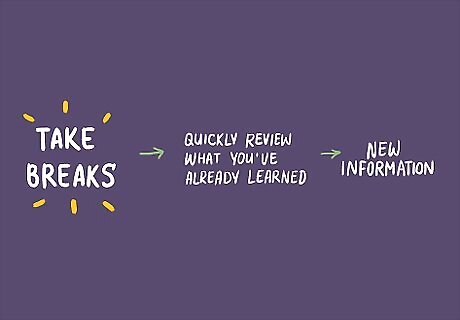
Take breaks. No child can learn for hours on end. When you sense that they're wearing down, take a break. You probably need one, too. After a break, quickly review what they've already learned before moving onto new facts.
Checking Their Progress
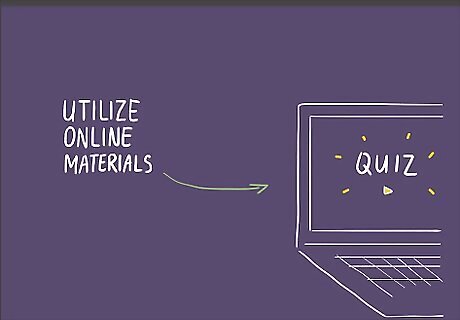
Utilize online materials. Once the paper and pens are put back and the initial hurdles are over, go online for quizzes and games to see how much your child has retained. Of course, it's possible to write out quizzes yourself and you're more than welcome to do this--but simply being on a computer may make your child feel like it's less of a test and more of a fun challenge.
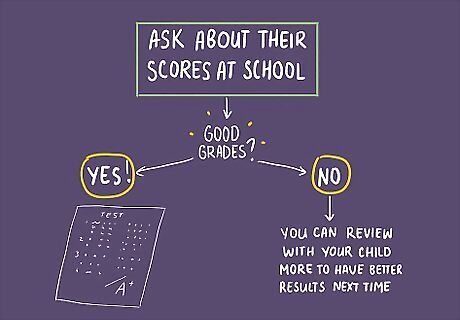
Ask about their scores. You've done all this work at home--now how has it gone at school? If your child isn't volunteering this information, just ask! They should be proud of good grades; if they're grades aren't so stellar, you can review with them more to have better results next time. It's always an option to call the teacher and inquire about the curriculum. An involved parent is always appreciated.




















Comments
0 comment